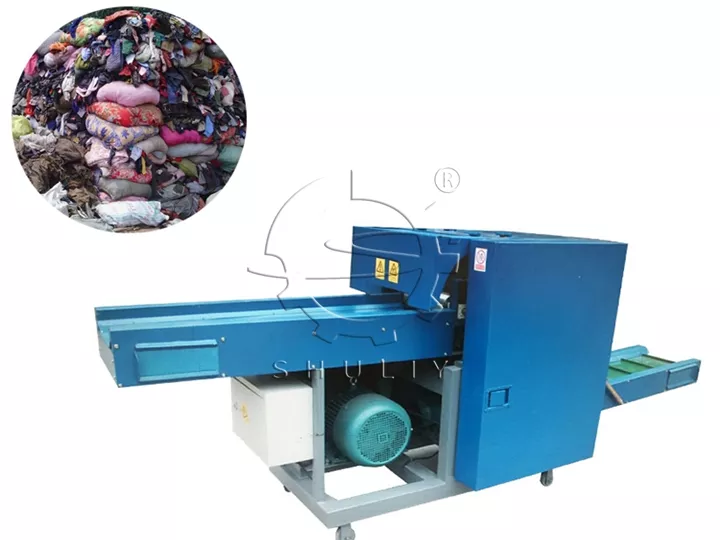Mesin pemotong serat tekstil terutama digunakan untuk memotong berbagai bahan serat—seperti limbah tekstil, serat kaca, serat aramid, dan sisa kain—menjadi panjang yang diinginkan untuk pengolahan ulang dan penggunaan kembali.
Peralatan ini menghasilkan pemotongan yang tajam dengan panjang yang dapat dikontrol, secara signifikan meningkatkan tingkat pemulihan serat. Ini juga menyediakan bahan baku berkualitas tinggi untuk proses hilir seperti pembuatan karpet, produksi felt, dan pengepakan kompresi.
Sebagai peralatan penting untuk daur ulang dan regenerasi limbah tekstil modern, mesin ini banyak digunakan di industri termasuk tekstil, kimia, dan bahan baru.
Bahan baku yang dapat diproses
Mesin pemotong serat tekstil biasanya digunakan untuk mengolah berbagai bahan serat, termasuk namun tidak terbatas pada jenis bahan baku berikut:
- Limbah tekstil: termasuk pakaian bekas, sprei, handuk, kain, dll.
- Limbah serat: seperti sisa serat dari industri tekstil, limbah pemotongan, dll.
- Kertas dan kardus, lembaran plastik.
- Karet: selang karet, sabuk karet, dll.
- Kawat logam, serat sintetis.
- Bahan selulosa lain: mis. bambu, serat kayu, rami, dll.
Harap dicatat bahwa model dan konfigurasi mesin pemotong serat tekstil yang berbeda mungkin cocok untuk berbagai jenis bahan mentah, dan persyaratan aplikasi spesifik mungkin memerlukan pemilihan jenis mesin dan konfigurasi alat yang sesuai.
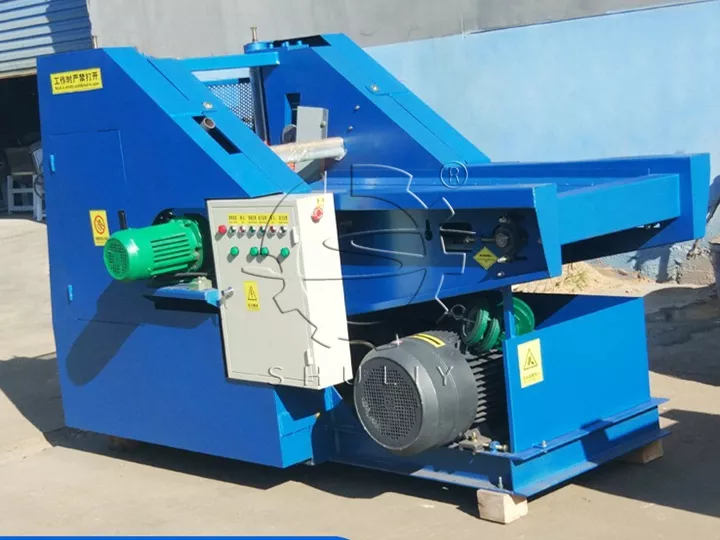
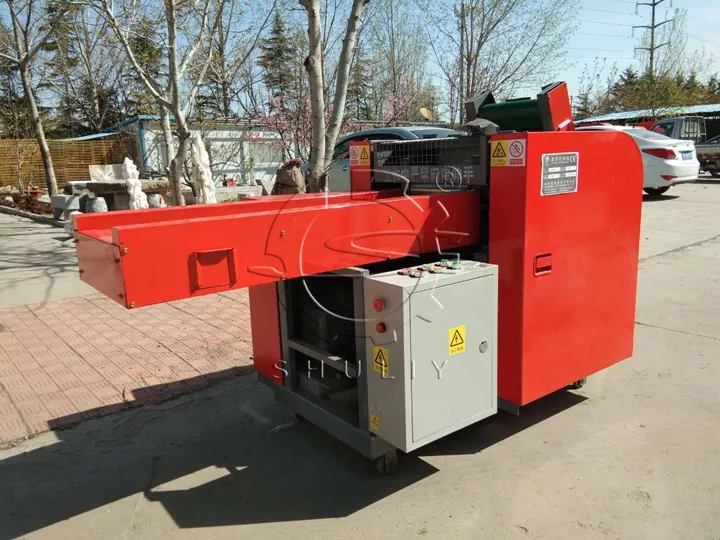
mesin pemotong limbah serat produk jadi tampilan
Pemotong serat tekstil dapat memotong bahan serat limbah secara efisien dan akurat sesuai panjang yang diinginkan, memastikan hasilnya seragam dan konsisten. Blok serat potong ini biasanya memiliki bentuk yang kompak untuk memudahkan penanganan dan pengangkutan selanjutnya.
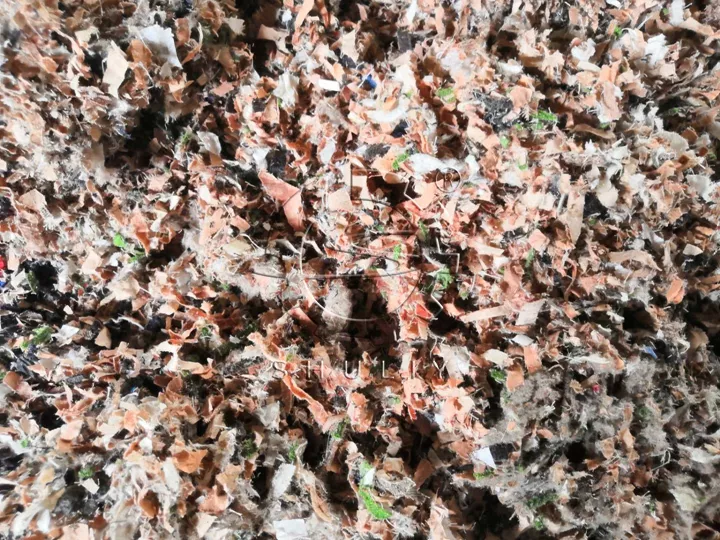
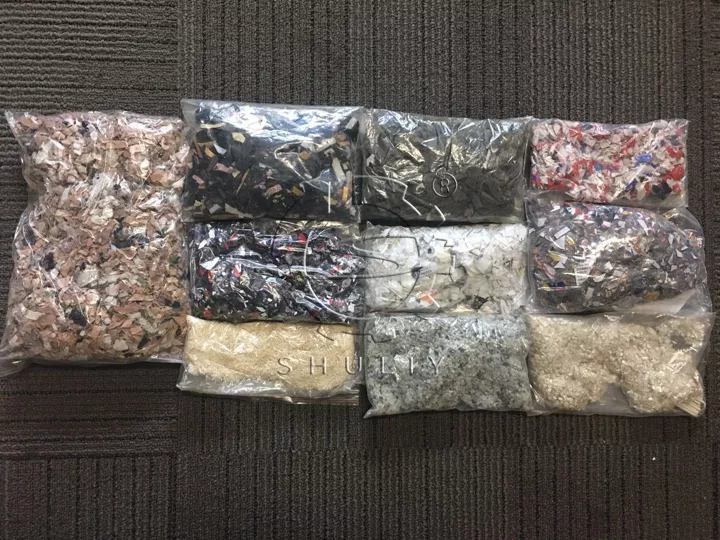
fungsi mesin pemotong serat tekstil
- Serat dapat dipotong ke berbagai panjang sesuai kebutuhan untuk memenuhi spesifikasi bahan baku bagi berbagai aplikasi industri.
- Memproses kain limbah, sisa tekstil, dan serat limbah menjadi panjang yang sesuai untuk didaur ulang.
- Sebagai peralatan depan pada jalur daur ulang serat, mesin ini memasok bahan baku yang sesuai untuk proses selanjutnya seperti penggilingan, peletisasi, dan pengepakan.
- Mendukung operasi otomatis atau semi-otomatis untuk pemotongan cepat berkapasitas tinggi, mengurangi intensitas tenaga kerja manual.
- Mengubah serat limbah menjadi bahan baku sekunder yang dapat digunakan kembali membantu menghemat sumber daya, menurunkan biaya produksi, dan mendorong ekonomi sirkular hijau.
Keunggulan mesin pemotong kain
- Pemotongan tajam berkecepatan tinggi: menggunakan desain pisau berkualitas tinggi untuk potongan bersih dengan penyebaran serat minimal.
- Operasi ramah pengguna: desain cerdas dengan parameter yang dapat disesuaikan memungkinkan penguasaan cepat oleh berbagai pengguna.
- Aplikasi serbaguna: memproses berbagai bahan termasuk serat kapas, serat sintetis, serat kaca, dan serat aramid.
- Automasi tinggi: mendukung pemasukan dan pemotongan kontinu, secara signifikan meningkatkan efisiensi produksi.
- Hemat energi dan ramah lingkungan: mendaur ulang serat limbah menjadi sumber daya yang dapat digunakan, mengurangi dampak lingkungan dan sejalan dengan tujuan pembangunan berkelanjutan.
- Kokoh dan tahan lama: konstruksi yang kuat dengan komponen inti tahan aus memastikan operasi stabil jangka panjang.
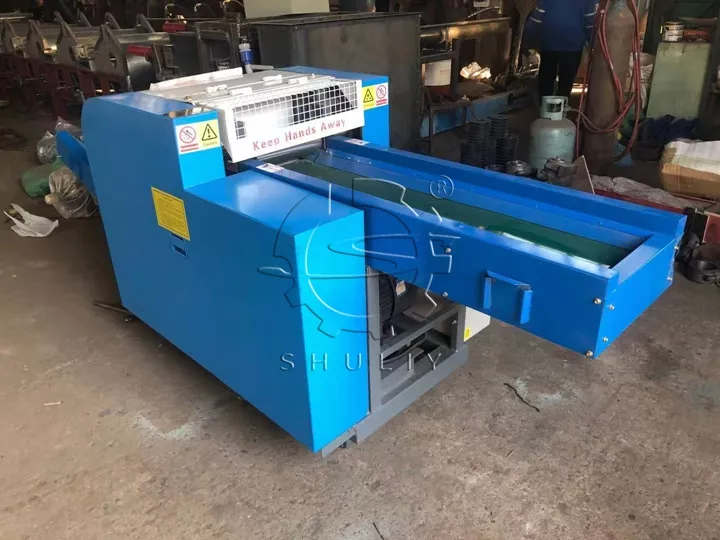
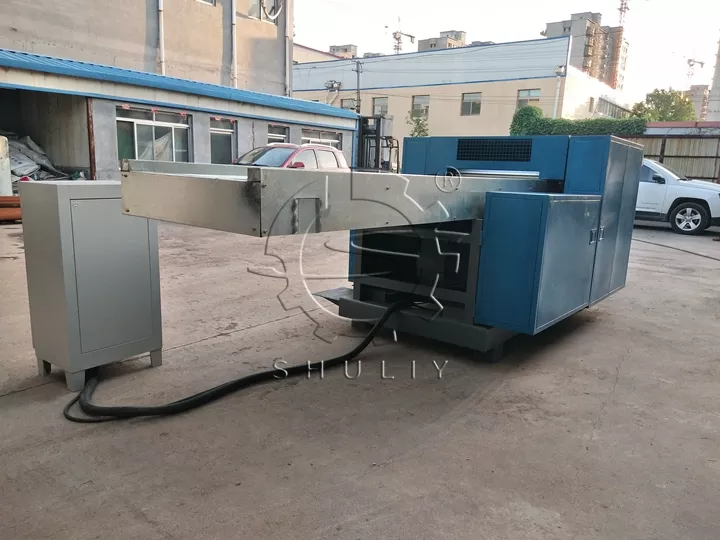
Fitur-fitur ini menjadikan mesin pemotong serat tekstil sebagai alat penting dalam industri daur ulang dan reklamasi serat, membantu mengurangi jumlah limbah, mengurangi pemborosan sumber daya, dan mendorong perlindungan dan keberlanjutan lingkungan.
prinsip kerja mesin penghancur limbah kain
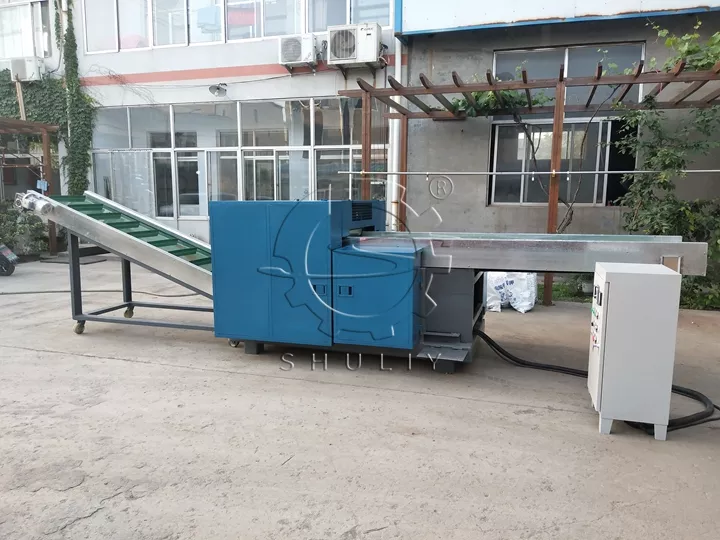
Mesin pemotong serat tekstil menggunakan alat pemotong tajam untuk memotong bahan serat secara tepat guna mendapatkan panjang dan bentuk yang diinginkan untuk berbagai aplikasi industri. Prosesnya biasanya efisien, tepat, dan agak otomatis, sehingga berkontribusi terhadap peningkatan produktivitas dan pemulihan sumber daya.
Penyuapan dan Pemosisian
Pertama, bahan serat yang akan diproses (misalnya limbah tekstil) dimasukkan ke dalam mesin melalui sistem pengumpanan. Biasanya material ini ditempatkan di area pemotongan.
Proses pemotongan
Mesin pemotong serat tekstil dilengkapi dengan bilah atau alat pemotong tajam yang dapat memotong bahan berserat dengan kecepatan tinggi. Biasanya, bilah ini dapat diatur sesuai kebutuhan untuk memastikan panjang yang diinginkan.
Kontrol Panjang
Kontrol yang tepat terhadap panjang serat yang dipotong dapat dicapai dengan mengatur posisi bilah atau mengatur kecepatan mesin.
Pengumpulan dan Penanganan
Setelah serat dipotong sesuai panjang yang diinginkan, serat dapat dikumpulkan dan ditangani untuk langkah pemrosesan selanjutnya, seperti pencacahan serat, baling, dan sebagainya.
Suku cadang yang cocok untuk mesin daur ulang serat
Pemotong memiliki dua bilah tetap dan empat bilah bergerak, dan bilahnya terbuat dari baja perkakas paduan.
Sesuai dengan persyaratan kehalusan dan ukuran produk jadi yang berbeda, kami dilengkapi dengan rol dan bilah pisau yang berbeda. Untuk mencegah pisau tumpul, Anda bisa melepas kancing resleting, dll dari pakaian.
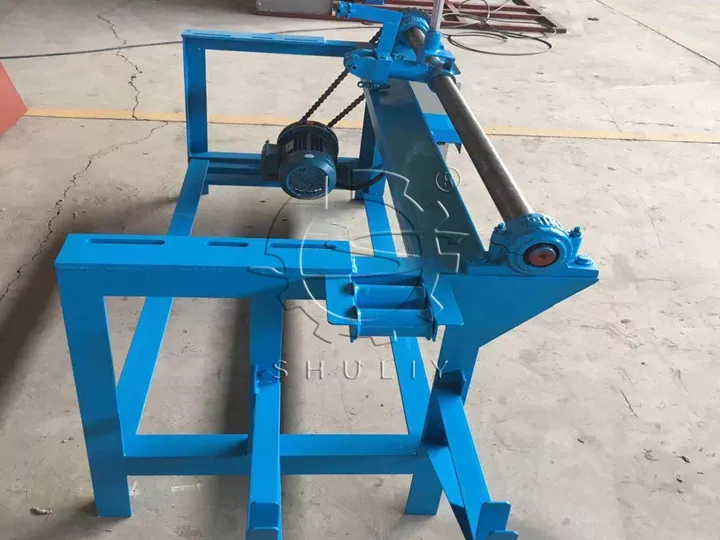
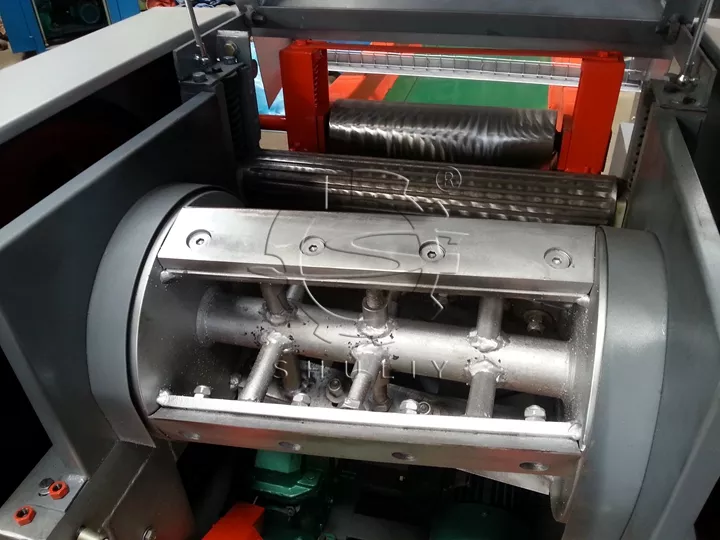
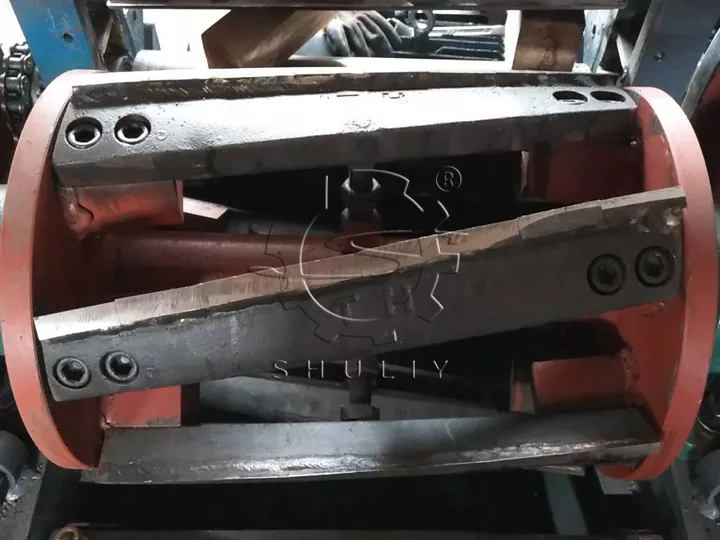
parameter mesin penghancur serat tekstil
Parameter teknis mesin pemotong serat dapat bervariasi tergantung pada model dan pabrikannya, berikut beberapa parameter umum untuk tiga model populer:
| Model | SL-800 | SL-1200 | SL-1600 |
| Kapasitas | 300-500kg/jam | 300-500kg/jam | 1000-3000kg/jam |
| Kekuatan | 7,5+1,5kw | 15+1,5kw | 18,5+3kw |
| Ukuran potong | 3-15cm (ukuran biasa) | 3-15cm (ukuran biasa) | 3-15cm (ukuran biasa) |
| Ketebalan potongan | 30-80mm | 30-80mm | 30-70mm |
| Dimensi | 2150*1250*1360mm | 3200*1000*1200mm | 7000*1800*1950mm |
Jika Anda ingin mendapatkan informasi lebih detail, jangan ragu untuk menghubungi kami!
pengemasan dan pengiriman pemotong serat
Mesin pemotong serat tekstil kami dikirim ke berbagai negara, terutama di daerah dengan permintaan tinggi di sektor tekstil dan daur ulang limbah. Berikut adalah negara-negara yang sering menerima pemotong serat untuk ekspor: India, Vietnam, Bangladesh, Brasil, Mesir, Meksiko, Turki, Thailand, dan Rusia.
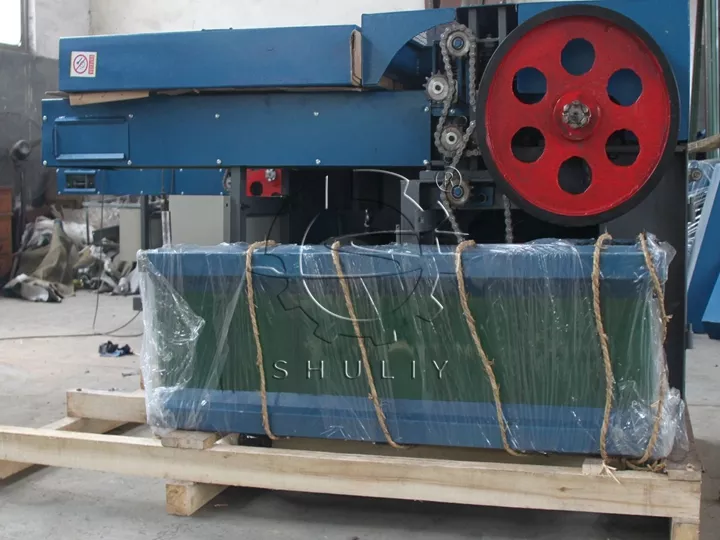
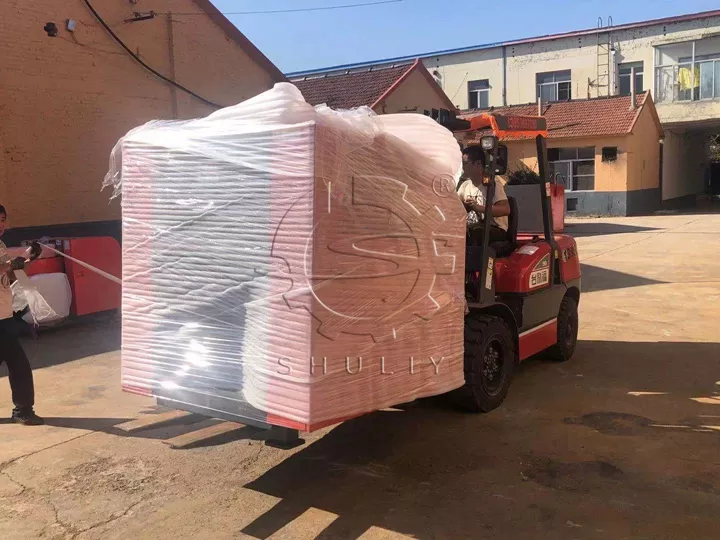
Negara-negara ini biasanya memiliki industri tekstil, daur ulang limbah, atau pemulihan sumber daya yang besar dan oleh karena itu memiliki permintaan yang relatif tinggi untuk pemotong serat. Mesin semacam itu memainkan peran kunci dalam bidang daur ulang dan regenerasi serat dan membantu dalam mengubah bahan limbah serat menjadi bahan baku daur ulang yang dapat digunakan.
Terdapat pasar global untuk mesin pemotong serat tekstil dan tujuan ekspor pastinya akan bergantung pada strategi pemasaran produsen dan kebutuhan pelanggan.

